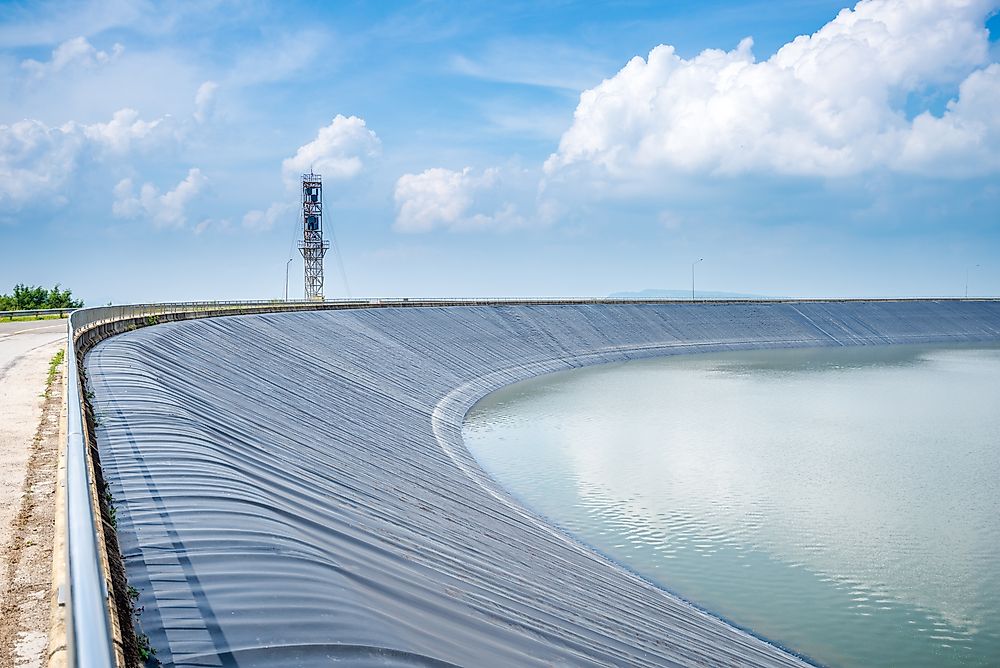What Is The Environmental Impact Of Reservoirs?

Reservoirs are fluid storage spaces which are either naturally occurring or are artificially constructed along the courses of rivers. The dams are put into use for various reasons: hydroelectric power generation, for recreational opportunities, increased water for irrigation, flood control and for supply of safe, clean drinking water. In the recent past, there has seen a steady increase in demand for energy and water. In order to meet the demand, there has been an increase in reservoir construction, a move that often raises debates the negative environmental effects that accompany the reservoir construction and operation. Adverse environmental effects can either be experienced upstream, below the dam itself and downstream towards the coast lines. Major effects are climatic changes, erosion and sedimentation, interferences with ecosystems, human migration and diseases spread among humans.
Climate Change
Methane is a major output product of the hydroelectric power generation reservoirs. Carbon dioxide is also a major greenhouse gas associated with reservoirs. These two gases can cause significant changes in the global climate depending on the quantities emitted to the Earth’s atmosphere. The rate of production of the greenhouse gases is directly proportional with the temperatures of the reservoirs, with those in the tropics producing about 3000 milligrams per square meter per day of carbon dioxide and 100 milligrams per square meter per day of methane gas.
Destruction Of Natural Ecosystems
Various mechanisms upstream, around the dam and downstream lead to loss of biodiversity. The construction of the dam causes a break in the course of a river interfering with movement of migratory river animals like the trout and salmon. Erosion downstream and at the coastline cases loss of animal habitats thus ecosystems are interfered with. Dams have been erected for irrigation purposes. The agricultural activities that follow are strongly associated with loss of the existing dry ecosystem. In cases where reservoirs are used for flood control, there is an associated interference with the flood dependent agriculture and ecology. Reservoir surface water and bottom water has a temperature variation as shown by an analysis of Murray Dam Basin’s 11 large dams where the average temperature difference was 16.7 degrees Celsius.
Erosion
This occurs downstream at the coastline and at the river bed. There is massive sedimentation upstream as a result of the barrier created by the reservoir, causing very little or no sedimentation downstream, yet the rate of erosion remains constant. This leads to gradual deepening of the river bed and narrowing of the river. Ecological habitats are destroyed in the process at the river delta. Erosion at the coastline is as a result of absence of sedimentation, thus eroded soil and sand cannot be replaced.
Diseases
Reservoirs are associated with low flowing water, which is often a breeding ground for vectors responsible for transmission of various diseases. Examples of these vectors are mosquitoes and water snails. Mosquitoes are known for transmission of malaria while water snails are vectors for schistosomiasis.
Human Migration
Human resettlement is for mainly for disaster aversion which would accompany the erection and operation of reservoirs. Examples of these are diseases and flooding in case of failure. When human migration is not consensual, there is trauma, economic and social hurdles that accompany people. In some cases, these people bring about overpopulation in the areas they settle in leading to further destruction of biodiversity.











